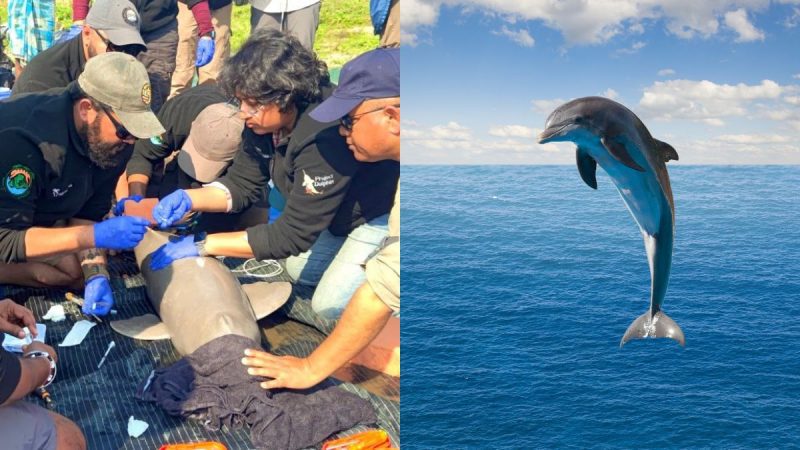In a first for India, conservationists were successfully able to geotag a Ganges River Dolphin in Assam on Wednesday. This exercise marks an important milestone for Project Dolphin. With this, the Wildlife Institute of India (WII) will have a better understanding of the dolphin’s habitat needs and movement patterns. Scroll on to know more about this.
Wildlife Institute Of India Geotags Ganges River Dolphin In Assam
On December 18, a 40-member team of conservation experts along with trained fishermen and veterinarians successfully satellite-tagged a Ganges River Dolphin in Assam. They caught a healthy male dolphin at the Kulsi, a tributary of the Brahmaputra. According to the Deccan Herald, the region is one of its biggest habitats and will allow scientists to get real-time data on its movement and habitat range.
Bhupender Yadav, Union Minister of Environment, Forest and Climate Change (MoEFCC), took to X (formerly Twitter) to share this good news. He called this achievement a “historic milestone for the species and India.” This project was funded by MoEFCC and National CAMPA and led by the Wildlife Institute of India in collaboration with the Assam Forest Dept and Aaranyak. With this successful geotagging, the officials believe they will be able to conserve our National Aquatic Animal better.
As per reports, the Ganges River Dolphin was classified as endangered by the International Union for Conservation of Nature (IUCN). Its numbers were dwindling due to its rapidly degrading natural habitat, river pollution, and construction of dams and barrages. Keeping this in mind, the government launched ‘Project Dolphin’ to conserve the vital species in 2020.
All You Need To Know About This Milestone
According to Deccan Herald’s report, despite its wide range, there is very little information about the ecological needs of the Ganges River Dolphin. Due to its elusive behaviour, it becomes difficult to understand their ecological needs as it surfaces for only 5–30 seconds at a time.
With this geotagging, evidence-based conservation strategies, seasonal and migratory patterns, range, distribution, habitat utilisation, and more will become more evident for scientists. Furthermore, the conservation experts also plan to satellite tag two or three more dolphins in the upcoming weeks.
Congratulations to the entire team for this historic achievement! We hope this helps them conserve the endangered dolphins and know more about the aquatic creatures.
Cover Image Courtesy: X/wii_india & Canva (representative image)

